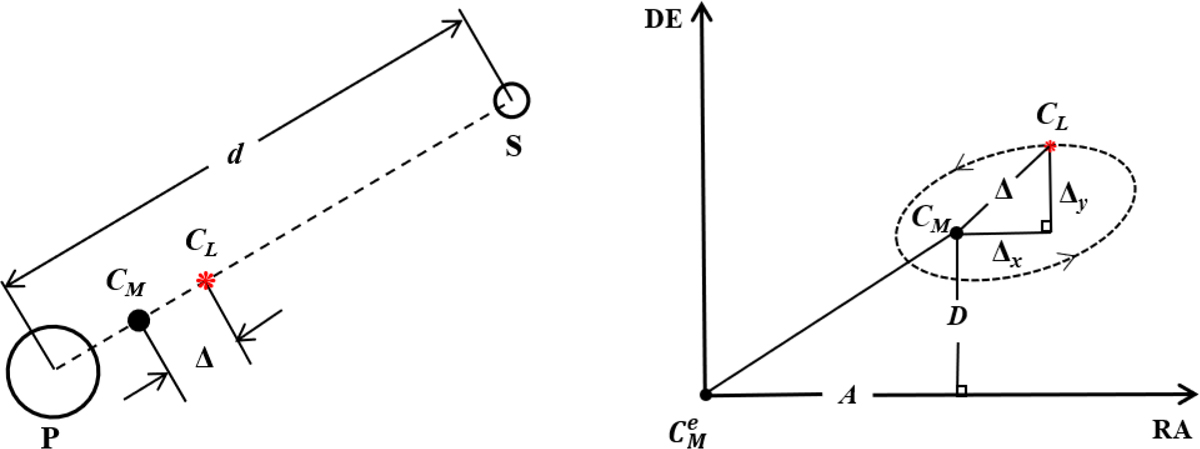Fig. 3

Download original image
Schematic diagram. In left panel, the primary (P, here Haumea) and the secondary (S, here Hi’iaka) rotate mutually around their center of mass CM , but only their photocenter CL is visible and measurable. Thus our observed trajectory of the photocenter will be its rotation motion around the center of mass CM along an approximate ellipse when the center of mass is chosen as a reference origin. The angular separation of the secondary relative to its primary is supposed to be d (it is usually less than the atmospheric seeing for a ground-based telescope, thus only an unresolved image is observed) and its projections to right ascension and declination are (xc, yc), respectively. Correspondingly the separation between the photocenter and the center of mass is Δ. In right panel, the center of mass ![]() in the ephemeris for the primary and its secondary component is also shown as the reference origin. Here, the true center of mass CM has an offset (A, D) from
in the ephemeris for the primary and its secondary component is also shown as the reference origin. Here, the true center of mass CM has an offset (A, D) from ![]() . In addition, an ellipse is drawn for the trajectory of the photocenter CL going around the center of mass CM. The projections of the angle separation Δ in right ascension and declination are Δx and Δy, respectively.
. In addition, an ellipse is drawn for the trajectory of the photocenter CL going around the center of mass CM. The projections of the angle separation Δ in right ascension and declination are Δx and Δy, respectively.
Current usage metrics show cumulative count of Article Views (full-text article views including HTML views, PDF and ePub downloads, according to the available data) and Abstracts Views on Vision4Press platform.
Data correspond to usage on the plateform after 2015. The current usage metrics is available 48-96 hours after online publication and is updated daily on week days.
Initial download of the metrics may take a while.


